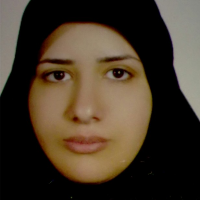Palynostratigraphy of the Middle Jurassic strata of central and eastern Alborz
Author(s):
Article Type:
Research/Original Article (دارای رتبه معتبر)
Abstract:
Introduction
In the geological history of Iran, the Mesozoic Era is of great significance since many important geological events occurred during this time interval. The tectonic and paleogeographic evolution of Iran during the Mesozoic controlled by the geodynamic interaction of Eurasian continental margin and the Tethyan oceanic belt. In the southern Alborz the Middle Jurassic marine transgression (Dalichai Formation overlying the Shemshak strata) began in upper Bajocian. The former rock unit is represented by greenish-grey calcareous shales, marls, and fossiliferous (ammonites) limestones (Steiger, 1966) widely distributed in the northern Alborz Mountains. It disconformably overlies the dark, siliciclastic coal-bearing Shemshak Formation and underlies gradually by the light-colored, rather uniform chert-bearing Lar limestones. The Dalichai Formation signifies the first rock unit of the Jurassic marine sediments in the Alborz Mountains. It embraces such diverse fauna as ammonites, belemnites, bivalves, brachiopods, echinoderms, sponges, miospores (spores and pollen grain), dinoflagellates, bryozoans and foraminifera (Stöcklin 1972; Sussli 1976; Nabavi & Seyed-Emami 1977; Alavi-Naini et al. 1982; Schairer et al. 1991; Seyed-Emami et al. 1985, 1989, 1995, 1996; Shafeizad et al. 2002; Shafeizad and Seyed- Emami 2005; Alvani 2006; , Niknahad 2007; Shahrabi 1994; Vaziri et al. 2008, 2011; Shams 2007; Makvandi 2000; Tutunchi 2001). Due to the presence of palynologically promising lithologies therein. The Dalichai Formation 8has been the subject of many palynological studies (e.g., Wheeler & Sarjeant 1990; Ghasemi-Nejad et al. 2012; Mafi et al. 2013; Dehbozorgi et al. 2013; Hashemi-Yazdi et al. 2015; Skupien et al. 2015; Dehbozorgi 2013; Saadati Jafarabadi et al. 2013; Hashemi Yazdi 2008, 2015; Orak 2010; Sajjadi et al. 2009; Sabbaghiyan 2009; Ghasemi-Nejad et al. 2008; Boroumand et al. 2011, 2013; Farisi Kermani 2003; Ghasemi- Nejad & Khaki 2002; Navidi 2013). The main aim of this study is to establish a palynostratigraphic scheme for the Middle Jurassic strata of central and eastern Alborz Mountains.
Material and Methods
A total of 104 palynological samples were collected exclusively from three outcrops of the Dalichai Formation in the central Alborz Mountains (Poldokhtar and Balu stratigraphic sections) and eastern Alborz (Lavan stratigraphic section). All samples were prepared following standard palynological processing procedures (e.g. Phipps & Playford, 1984; Traverse, 2007). Rock samples treated by acids (10%—50% hydrochloric acid to dissolve carbonates and 40% hydrofluoric acid to remove silicates); followed by application of hot 50% HCl to dissolve silica-gel formed during HF treatment. The residues then further treated with saturated ZnCl2 for mineral separation. All residues subsequently sieved through a 20μm mesh prior to make strew slides. Three slides of each preparation examined by transmitted light microscope. The slides are stored in the collection of Faculty of Geology, Tehran University, Tehran, Iran.
Discussion of Results and Conclusions
The Middle Jurassic shales and calcareous shales are widely distributed acorss northern Iran. Diverse palynofloras comprising spores (90 species belonging to 44 genera) and 22 pollen taxa (attributed to 9 genera) occur in 104 surface rock samples collected from the Dalichai Formation at Poldokhtar, Balu, and Levan stratigraphic sections in the Alborz Ranges. In addition to terrestrial elements, such well preserved marine palynomorphs as dinoflagellates, foraminiferal test linings, tasmanites, scolecodonts, and acritarchs are also encountered in the assemblages investigated. According to the presence of such miospores species with known worldwide stratigraphic distribution as Klukisporites variegatus, Concavissimisporites verrucosus, Converrucosisporites pricei, Sellaspora asperata, Contignisporites burgeri, Osmundacidites senectus, Striatella spp. the host strata are conceivably dated as Middle Jurassic. This age determination is supported by the occurrence in the material examined of such distinct Middle Jurassic (late Bajocian-Callovian) dinoflagellates as Cribroperidinium crispum, Meiourogonyaulax valensii, Carpatodinium predae,Ctenidodinium combazii,Compositosphaeridium polonicum,and Mendicodinium groenlandicum. Based on the co-occurrence of land-derived palynomorphs a Klukisporites variegatus-Araucariacites australis-Cerebropollenites macroverrucosus Assemblage Zone is herein introduced in the Middle Jurassic strata studied.Keywords:
Language:
Persian
Published:
Stratigraphy and Sedimentology Researches, Volume:34 Issue: 3, 2018
Pages:
21 to 36
magiran.com/p1970903
دانلود و مطالعه متن این مقاله با یکی از روشهای زیر امکان پذیر است:
اشتراک شخصی
با عضویت و پرداخت آنلاین حق اشتراک یکساله به مبلغ 1,390,000ريال میتوانید 70 عنوان مطلب دانلود کنید!
اشتراک سازمانی
به کتابخانه دانشگاه یا محل کار خود پیشنهاد کنید تا اشتراک سازمانی این پایگاه را برای دسترسی نامحدود همه کاربران به متن مطالب تهیه نمایند!
توجه!
- حق عضویت دریافتی صرف حمایت از نشریات عضو و نگهداری، تکمیل و توسعه مگیران میشود.
- پرداخت حق اشتراک و دانلود مقالات اجازه بازنشر آن در سایر رسانههای چاپی و دیجیتال را به کاربر نمیدهد.
In order to view content subscription is required
Personal subscription
Subscribe magiran.com for 70 € euros via PayPal and download 70 articles during a year.
Organization subscription
Please contact us to subscribe your university or library for unlimited access!


